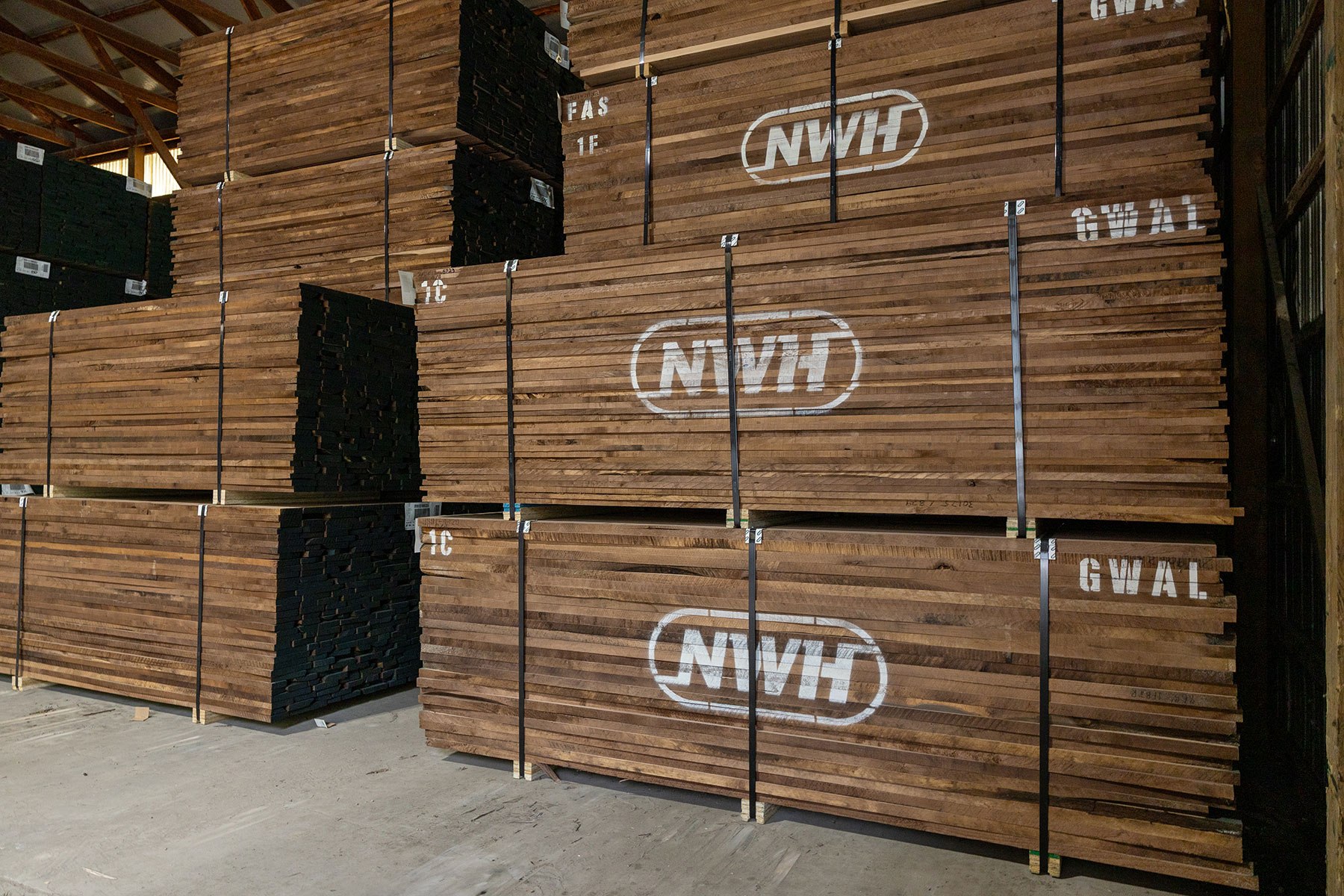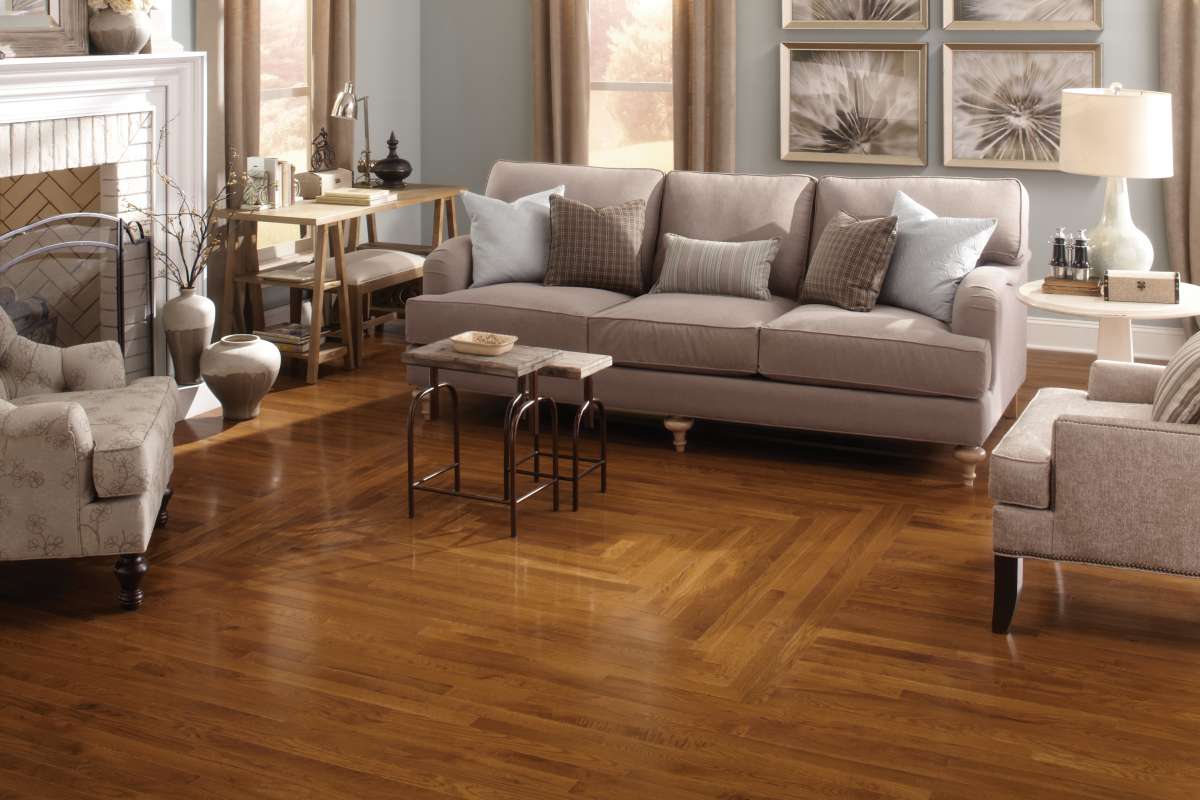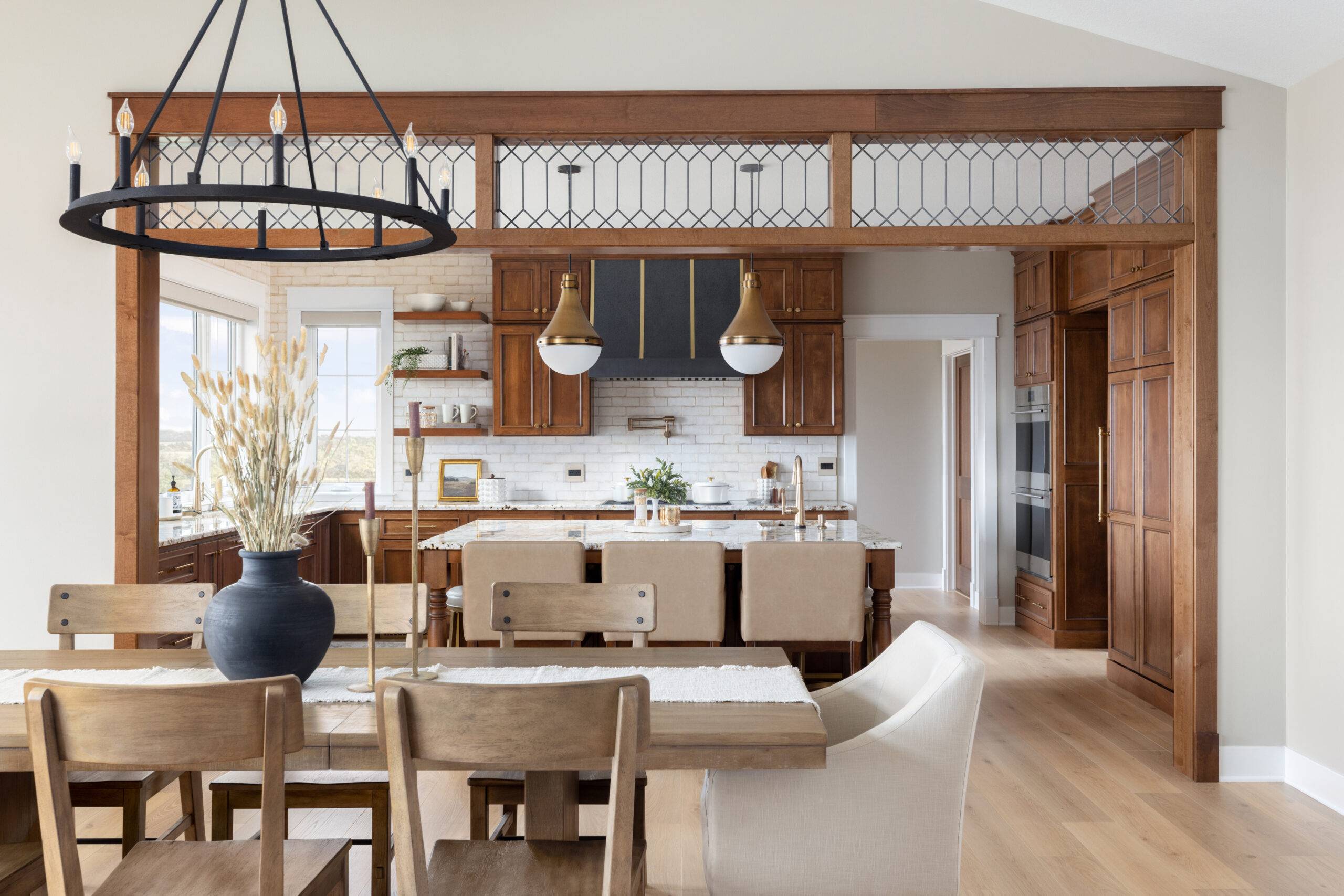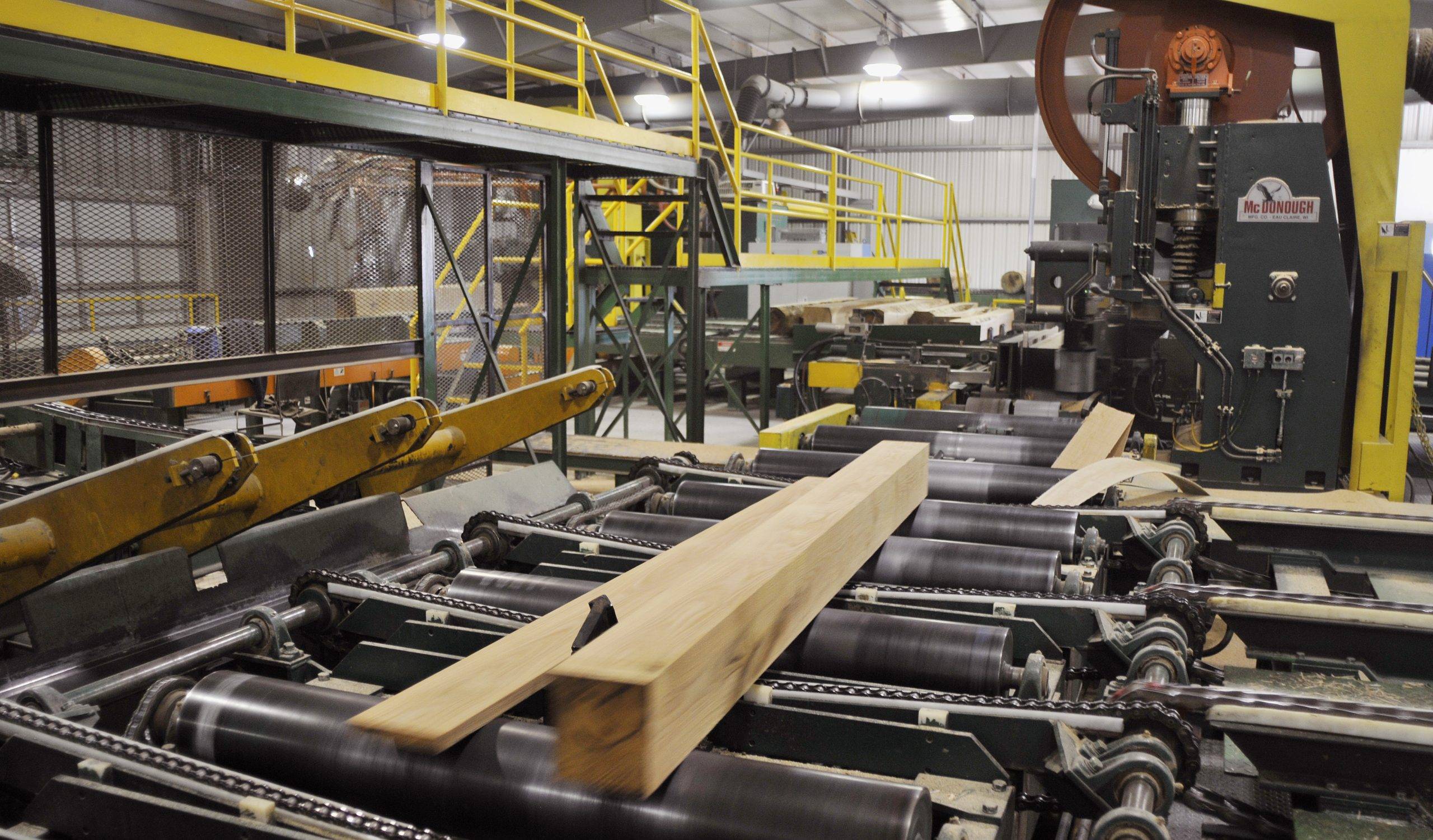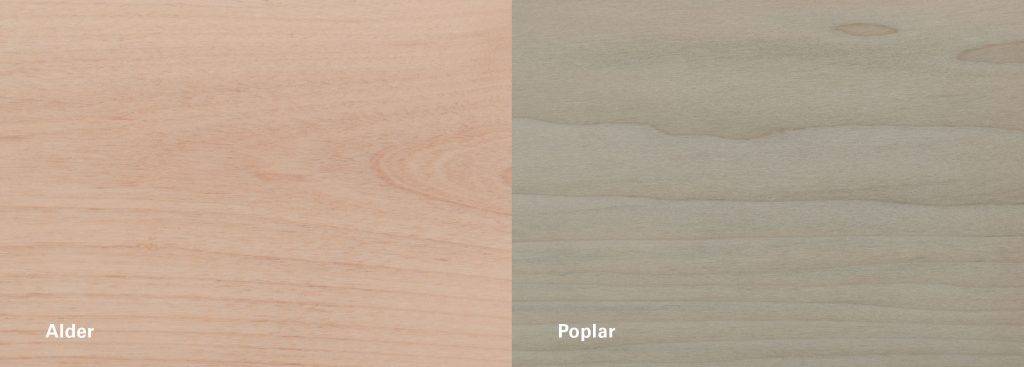
Overview of Alder
Alder is a robust hardwood that mirrors Poplar’s workable properties while excelling with aesthetic appeal. It is easy to machine and finish, featuring a color palette that ranges from light tan to reddish-brown. The uniform closed grain of Alder provides a subtle elegance to finished products. More importantly, Alder is typically more stable in price, offering a reliable alternative for those affected by Poplar’s market volatility.
Overview of Poplar
Poplar is a favored utility wood known for its ease of use and broad application range. Its whitish cast and straight grain pattern make it suitable for furniture, cabinetry, and millwork. The soft nature of Poplar allows for effortless machining and milling, yet strong enough for many applications. However, the demand for Poplar makes its price vulnerable to market changes, affecting supply stability.

Similarities Between Alder and Poplar
Workability: Both Alder and Poplar process similarly and are forgiving, making them ideal for efficient high-volume runs. Alder edges out Poplar in being more dimensionally stable, ensuring consistent quality in finished products.
Aesthetic Appeal: Alder features a warm hue, offering an inviting and cohesive appearance. In contrast, Poplar varies in color from creamy white to dark green, making consistency more challenging.
Versatility: Both species have a similar Janka hardness in the mid-upper 500 range. Their durable nature allows them to be used in a variety of products, from cabinets to mouldings, ensuring flexibility in application and design.
By choosing Alder as an alternative to Poplar, manufacturers can expect reliable performance and aesthetic excellence, while also mitigating the risks associated with price volatility.
Consider Alder for your next project and experience the benefits of this versatile and stable hardwood.

Species Comparison Data

Source: The Wood Database
Species Comparison Chart
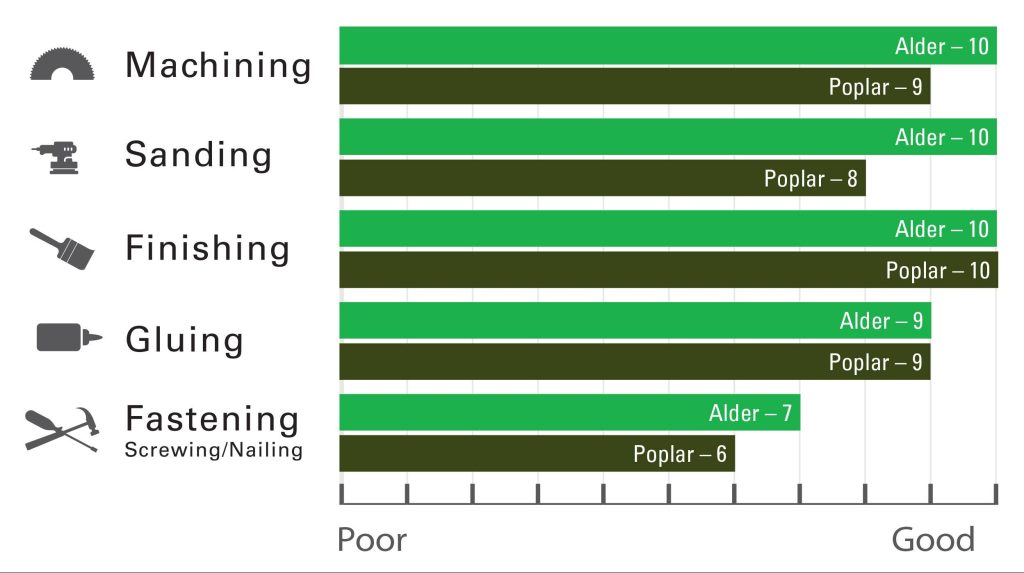
Resources
Feature Image: Alder Millwork, Craftsmen in Wood
Share This Post!
